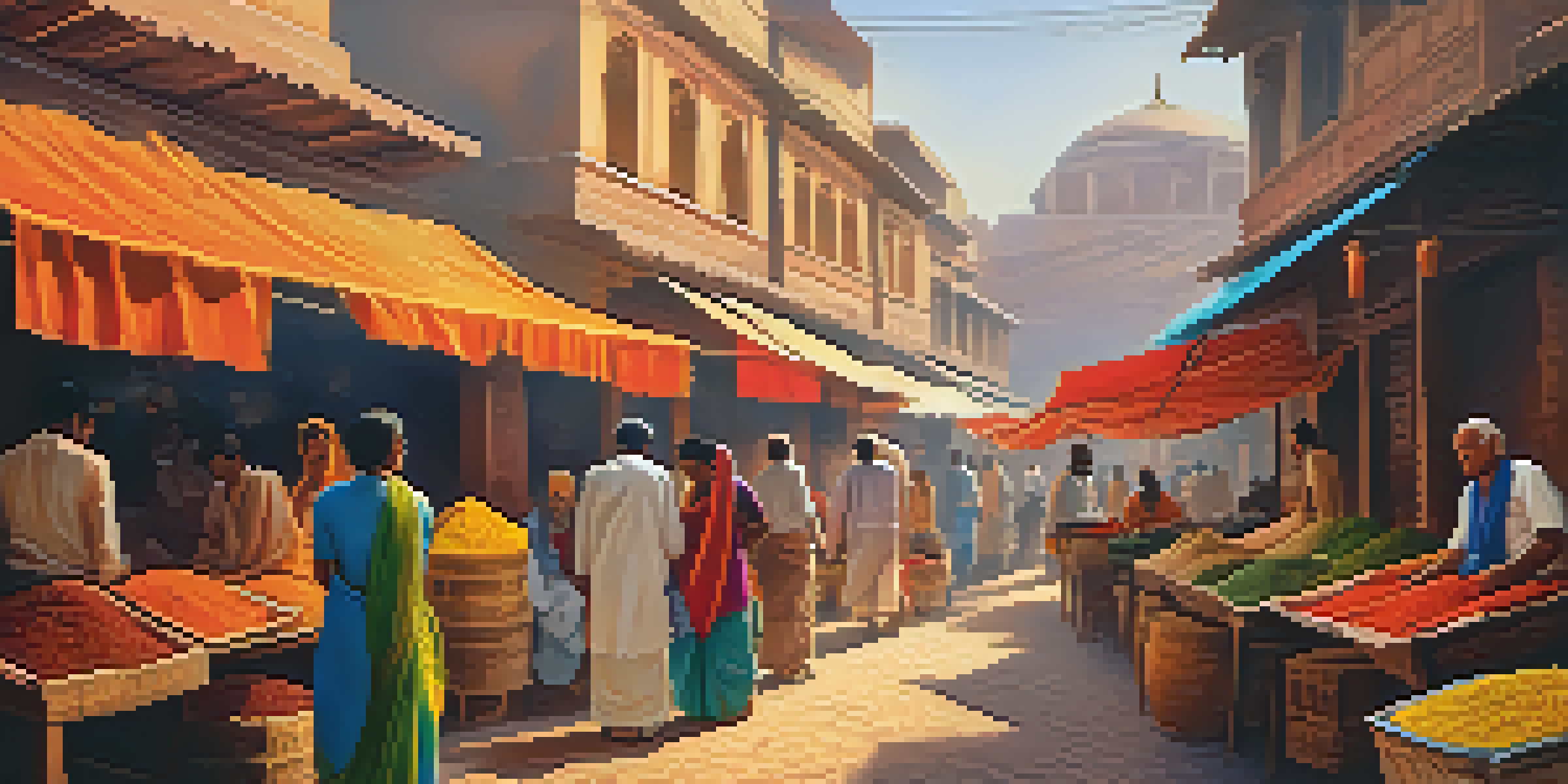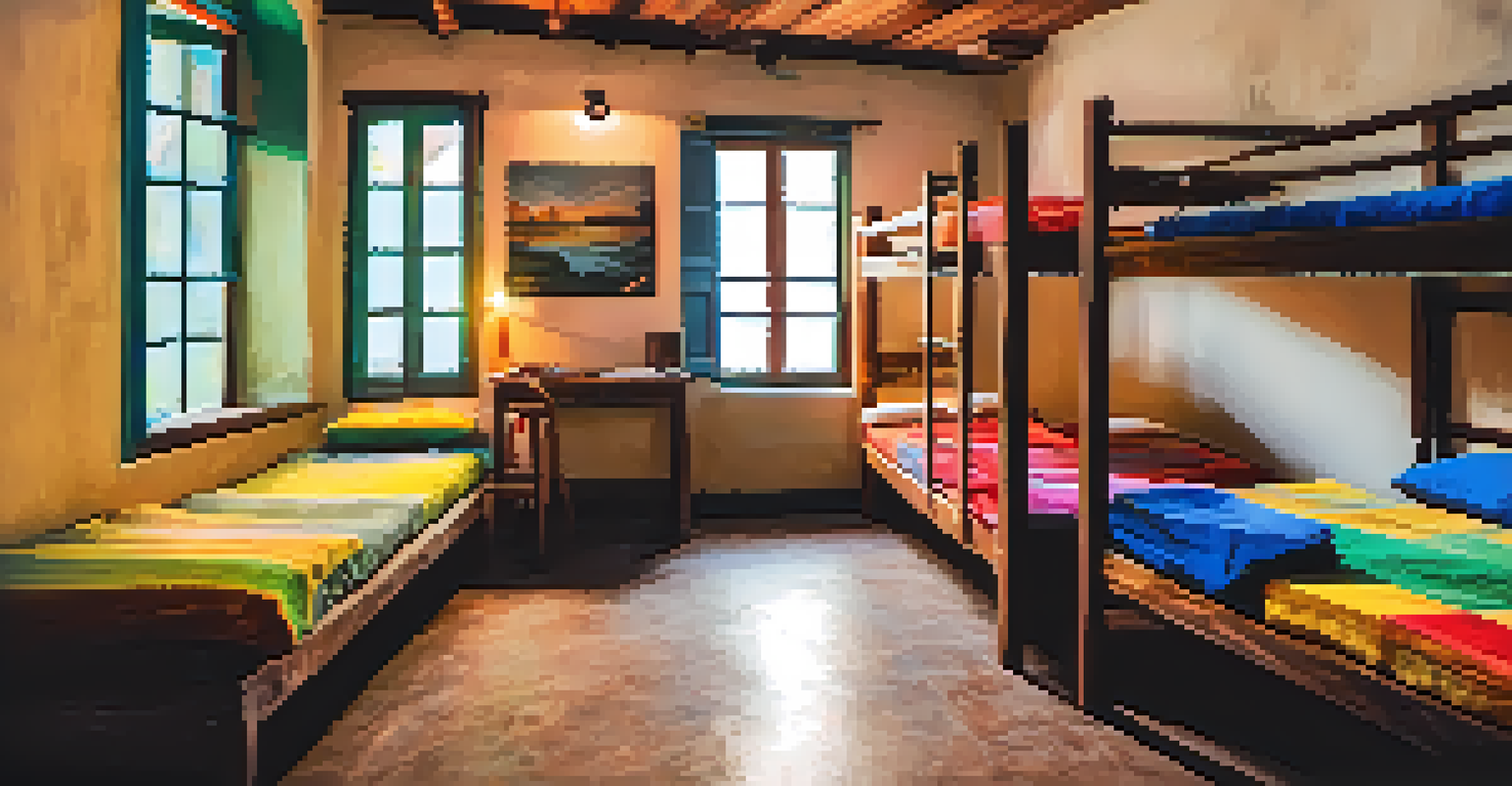Essential Tips for Backpacking India on a Budget

Plan Your Itinerary Wisely for Cost-Effective Travel
Before embarking on your backpacking adventure in India, it's crucial to plan your itinerary carefully. This ensures you can maximize your experiences while minimizing costs. Focus on regions that are known for budget travel, like Rajasthan or Kerala, where you can explore rich culture and stunning landscapes without breaking the bank.
Traveling – it leaves you speechless, then turns you into a storyteller.
Additionally, consider the time of year you’re traveling. Off-peak seasons can significantly reduce accommodation and transportation costs. For instance, visiting during the monsoon can mean fewer crowds and lower prices, but be prepared for some rain!
Lastly, don’t forget to account for travel time between destinations. Choosing places that are close to each other can help save on transportation expenses, allowing you to spend more on experiences rather than travel.
Choose Affordable Accommodation Options
When it comes to backpacking in India, finding budget-friendly accommodations is key. Look for hostels, guesthouses, or homestays that offer a local experience at a fraction of the cost of hotels. Websites like Hostelworld or Airbnb can be great resources for finding these hidden gems.

Additionally, consider staying in places that offer kitchen facilities. Being able to cook your meals can save you a lot of money, especially in tourist-heavy areas where dining out can get pricey. Plus, it’s a fun way to experiment with local ingredients!
Plan Budget-Friendly Itineraries
Carefully planning your travel route and timing can help you enjoy India's rich culture while keeping costs low.
Don’t be afraid to negotiate prices, especially if you're staying longer or traveling during the off-season. Many places are willing to offer discounts for extended stays, which can lead to significant savings.
Utilize Public Transport for Budget Travel
India boasts an extensive public transportation system that is both affordable and efficient. Trains and buses are the backbone of travel in the country, and using them can save you a substantial amount of money compared to private taxis or flights. For example, a train journey from Delhi to Jaipur can cost you as little as a few dollars!
The journey not the arrival matters.
For shorter distances, consider local transport options like auto-rickshaws or cycle rickshaws. They're not only budget-friendly but also provide a unique way to experience the hustle and bustle of Indian streets. Always agree on a fare before getting in to avoid surprises.
Don't overlook the power of apps like Uber or Ola for city travel, which can be economical and convenient. Just be sure to check for surge pricing during peak hours!
Eat Like a Local to Save Money
One of the joys of traveling in India is the food, and eating like a local can be incredibly budget-friendly. Street food vendors offer delicious meals at a fraction of what you’d pay in restaurants, and the experience can be unforgettable! Dishes like dosa or chaat can fill you up without emptying your wallet.
Additionally, look for local eateries that cater to residents rather than tourists. These places often serve authentic food that’s cheaper and just as tasty. Eating where the locals eat not only saves you money but also gives you a true taste of Indian culture.
Choose Affordable Accommodations
Opt for budget-friendly lodging options like hostels or homestays, which can provide local experiences at lower prices.
However, don’t forget to pay attention to hygiene. Opt for busy stalls where food is prepared fresh and consumed quickly, indicating quality and safety.
Embrace Free or Low-Cost Activities
Backpacking in India doesn’t mean you have to spend a fortune on activities. Many attractions, like temples, parks, and markets, offer free or minimal entry fees. Exploring these can provide deep insights into the local culture without straining your budget.
Consider joining free walking tours in cities like Delhi or Mumbai, where knowledgeable guides can share fascinating stories and historical context. These tours often operate on a tip-based system, allowing you to pay what you can afford.
Additionally, take advantage of nature. India is home to stunning landscapes, and activities like hiking or visiting national parks can be low-cost or even free. Just pack some snacks and enjoy the great outdoors!
Stay Connected Without Breaking the Bank
Staying connected while backpacking in India doesn’t have to mean sky-high phone bills. Consider purchasing a local SIM card upon arrival. This will give you access to affordable data and calling plans, allowing you to navigate and stay in touch with fellow travelers easily.
Free Wi-Fi is also available in many cafes, restaurants, and hostels, so take advantage of these spots to stay connected without incurring extra costs. Just be cautious with sensitive information when using public networks.
Utilize Public Transport Efficiently
Leveraging India's extensive public transport system can save you significant money compared to private travel options.
Remember to download useful travel apps before your trip. Apps for maps, translation, and budgeting can help you navigate India more efficiently and save money along the way.
Pack Smart to Avoid Unnecessary Expenses
Packing wisely is a crucial part of backpacking on a budget. Aim to bring versatile clothing that can be layered for different climates, as India’s weather can vary widely across regions. This approach not only saves space but also means you won’t need to buy new clothes while traveling.
Include essentials like a reusable water bottle, which can minimize the need to purchase bottled water. Many places in India offer filtered water refills, so you can stay hydrated without spending money on single-use plastics.

Lastly, don’t forget a basic first-aid kit. Having your own supplies can prevent unexpected expenses from minor illnesses or injuries, allowing you to focus on enjoying your travels.